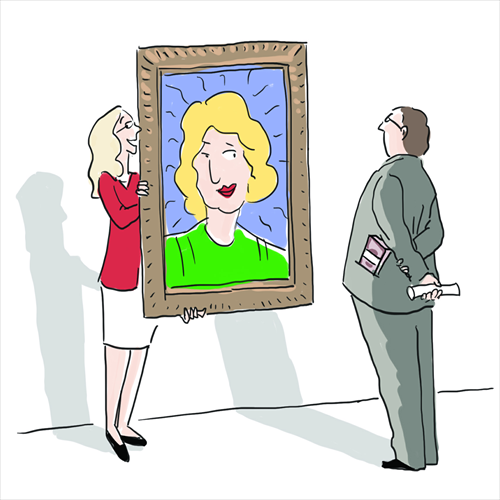HOME >> OP-ED
Naïve patriotism inflates Chinese art market
By Rong Xiaoqing Source:Global Times Published: 2015-3-26 19:38:01

Illustration: Liu Rui/GT
Wealthy Chinese are increasingly into art collecting. In recent years, they have gradually become a fixture of international auction houses. And their extravagant spending has become a mainstay of the business. Still, during Christie's Asian Art Week in New York, which was held last week, the Chinese collectors managed to exceed even these high expectations, and the effect was jaw dropping.The major collection was that of Robert Hatfield Ellsworth, the renowned American connoisseur and art dealer who passed away last August at the age of 85. As a lifelong collector and one of the most distinguished Western experts on Asian art, Ellsworth was well known and well respected in China. He was the first Western art dealer allowed to set foot in government storage areas in China after the open door policy to view the antiques confiscated during the Cultural Revolution (1966-76). He established the Chinese Heritage Art Foundation in Hong Kong to help preserve cultural heritage sites in China. He was an honorary consultant and curator of the Beijing History Museum. And he was an honorary Chinese citizen.
This all may help explain the electric atmosphere in the auction hall as 2,000 objects went up for bidding during a five-day auction series. Every day, the auction hall was packed with more than 1,000 collectors, many of whom were Chinese, of which a lot flew over from China for the event. The collectors showed great interest in almost all the objects and for some coveted ones, paddles were raised one after another at lightning speed until the prices were pushed up to stunning highs.
The collection realized $131.7 million, set world records in a few categories and helped Christie's to achieve the highest ever sales for its Asian Art Week in New York.
This reminds me of the time the Chinese first surprised the international art market, not as collectors but as artists.
In March 2006, Sotheby's held its pilot Asian contemporary art auction in New York, highlighting the works of a dozen or so Chinese artists including the now bold names like Xu Bing, Zhang Huan, and Wang Guangyi. The session brought in more than $13 million, almost doubling the high estimate, and set records for many of the artists.
A painting of Zhang Xiaogang, "Bloodline Series: Comrade No. 120," estimated at a value of $250,000 to $350,000, was sold for $979,200. That was the first time any contemporary Chinese artist had ever produced close to a "million-dollar baby." Yet by the spring of 2008, there were already works sold for more than $10 million, and the price index of Chinese contemporary art had quintupled.
But most Chinese artists didn't benefit much from the bull market. Most of the works that set records in auction houses had been purchased by Western collectors and speculators in the late 80s and the 90s at bargain prices that now sound like a joke. What the artists got from the fever was a clear picture of the tastes of Western collectors. Some of them took that as an excuse to make a lot of gaudy and vulgar works, only to watch the market bubble burst in 2009 in the aftermath of the financial crisis.
Now the Chinese are coming back to the international market to form a food chain - one end is the Chinese art works and the other end is the Chinese collectors. This sounds like a better structure which allows the Chinese to create real market legends, and place many antiques siphoned out of China back in the hands of Chinese people.
But the risk is that Chinese collectors, with cash in hand, patriotism in their hearts, and a habit of blindly following the crowd, could easily drive prices beyond any sense of value. At the Ellsworth sales, for example, the hammer prices of some of the objects made veteran collectors and art dealers raise their eyebrows. "The provenance had a lot to do with it, but should that really justify pricing a piece that I would expect to be priced at $5,000 or $6,000, to sell for $1.5 million?" asked Tom Swope, a New York antiques dealer in his blog about a Buddha sculpture from the Northern Qi dynasty (550-577).
Rationality may not be in large supply in the art world. But on the art market, it is a necessity for people who don't want to be victimized by their own passions.
The author is a New York-based journalist. rong_xiaoqing@hotmail.com
Posted in: Viewpoint